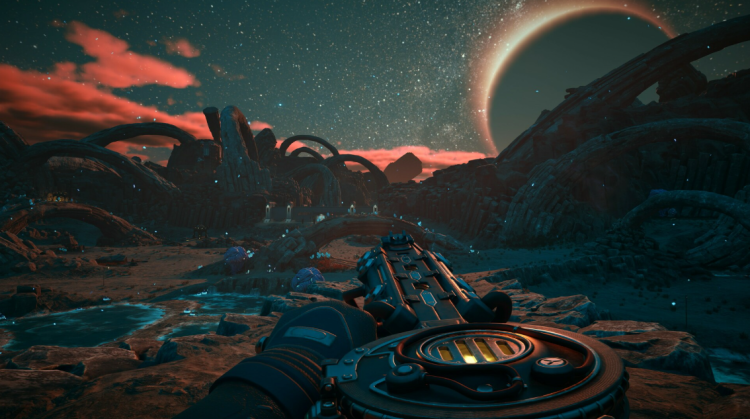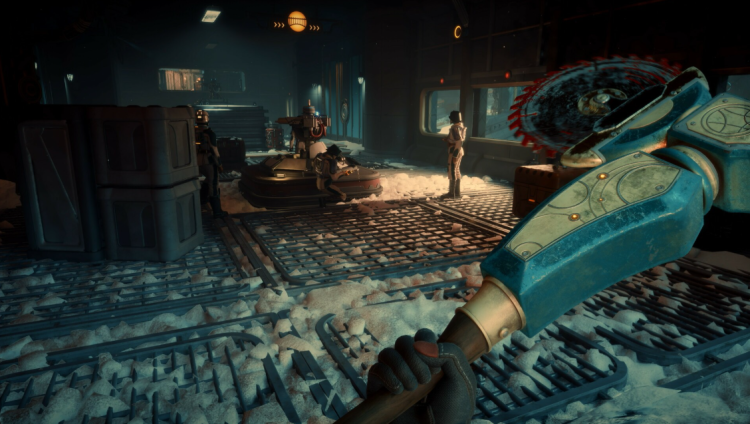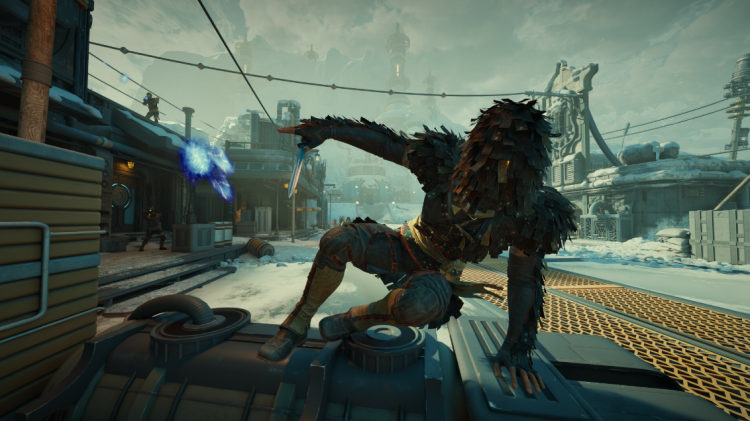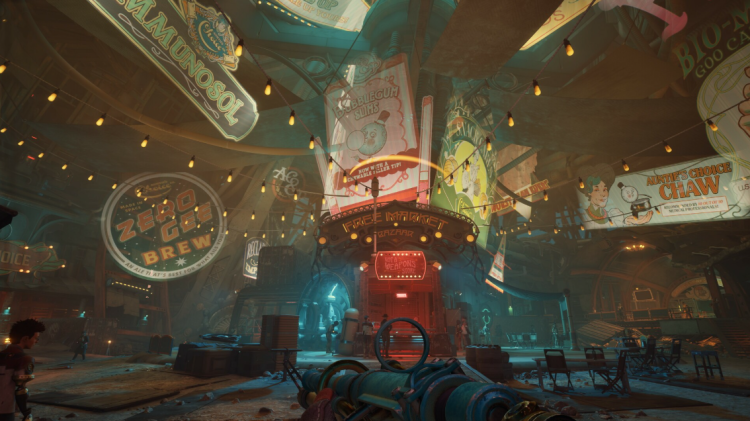The Outer Worlds 2 Review From Critics: Obsidian Refines Its Dystopian RPG Formula
In the latest offering from Obsidian Entertainment, The Outer Worlds 2 emerges not as a radical reinvention but as a thoughtful improvement on its own blueprint. For many players still expecting something novel or flashy, the game may feel familiar. Yet for those willing to dig into its mechanics, story, and setting, the sequel delivers enough refinement to warrant serious attention.
The Outer Worlds 2 early access started on October 23, with the full game release set on October 29.
According to reviewer Travis Northup at IGN, this is “a significant step up from the original.” He praises the more grounded story and stronger combat while noting a weak first act and disappointing enemy variety. SOURCE: Travis Northup, October 23, 2025.
“Y’know, the ones where you’re an especially cool person given undue authority to insert yourself into the various conflicts of the world and decide the fate of all living beings while collecting a cast of snarky companions in the process?” — Travis Northup
The setting continues the franchise’s trademark satire: a corporate-dominated future in which human ambition is subsumed by profit and control. The Outer Worlds 2 relocates the action from the Halcyon system to a new region called Arcadia, where familiar tropes of greed and power are rearranged in fresh combinations. Players explore planets under corporate rule, tracking factions that behave like governments, cartels, and ideological movements all at once.
What changes most noticeably is the tone. The earlier game leaned more on goofiness among its space-colony strip malls and oddball companions. The sequel opts for a more serious center of gravity, bringing political intrigue and moral stakes to the fore. Northup writes that the game:
“is much more interested in telling a grounded story—one that focuses squarely on the politics of Arcadia’s various factions and repeatedly forces you to make judgment calls on which of these deeply flawed organizations is the lesser evil.”
That shift carries force. You meet groups like Auntie’s Choice, a “freedom-forward capitalistic” faction that masquerades as a liberator but in practice behaves like a monopolistic pseudo-government. Then there’s The Protectorate, openly fascistic in its structure. Even the Order of the Ascendant—scientific and mathematically driven—commits atrocity in the name of some predicted future. These are not tidy villains: they are systems you weigh, and you choose which one will steer an entire planet’s fate.

Here's The Outer Worlds 2 official Steam page.
The narrative architecture still suffers from initial pacing problems. For roughly the first 20 hours, you’re on a revenge quest that lacks the momentum the later story enjoys. Northup points out that the main story “felt like the main story was quite slow and unengaging” during the early hours. That introduction works well to introduce characters and context, but the drag is significant enough to affect many players’ early impressions.
Once the second act kicks in, however, the game opens up. The RPG elements begin to sink their claws in, and here, The Outer Worlds 2 excels. The skill and perk system demands decisions. You receive two skill points per level across twelve possible skills, ranging from Leadership to Lockpicking. Meanwhile, perk unlocks depend on prerequisites, allowing options such as pickpocketing, persuasive lying, or automatic stealing via flaws. That last bit is a clever twist: if you steal a lot, you might be offered a “Kleptomaniac” flaw that gives you benefits—but also causes your character to steal automatically.
That paradigm encourages self-reflection and replay. One early moment in Northup’s playthrough involved accepting a “Jack of All Trades” flaw, which granted extra skill points but capped how high any one skill could go. The result: a character competent everywhere, exemplary nowhere. That kind of trade-off rewards players who think beyond the immediate loot drop or combat advantage.

Combat is the other big area of improvement. Compared to the original, The Outer Worlds 2 moves more fluidly. New mobility options, such as sliding and double-jumping, give movement in firefights a sharper edge. Weapons feel more distinctive: examples cited include a shotgun that fires silently and melts bodies inaccessible for looting, or one that evolves into a beast of destruction. Weapon and armor modification grows deeper: you might reduce your damage to gain explosive rounds, or build protection against elemental effects. These layers give reward systems — loot, exploration, side quests — real meaning.
Yet for all that progress, the game does not completely evade familiar traps. Enemy variety remains weak. Northup writes that too many worlds recur the same two or three types of wild animal, alongside humanoids and a few robots. The repetition undermines the promise of a “galaxy filled with so much promise.” Worse, enemy spawn behavior replicates the earlier game’s finite placement model: once you clear an area, it remains dead. That emptiness undermines momentum and world-building.

Fast travel works better than before, reducing time spent traversing empty space. But the emptiness remains noticeable — “long swathes of the map utterly devoid of life,” as one reviewer put it. For players who value spontaneous encounters or crowded atmospheres, that tone-down becomes a legible drawback.
The companion system shows clear progress. You journey with six primarily memorable characters, each aligned with a faction. For example, Tristan is a heavily-armored lawman eager to enforce his faction’s version of justice; Inez is a combat medic turned entrepreneur who champions the free-market roots she came from. These companions act as mouthpieces for their groups, and they perform double duty: they drive the story and explain context without breaking immersion.

The approach works. Even if you skip digging into every journal or side log, interactions with your crew let you absorb the power structure of Arcadia almost effortlessly. Some characters still lag behind: Niles, an engineer motivated by revenge, and Valerie, a robot with punchy one-liners but lesser narrative weight, are less compelling. The fact that they appear earlier makes the game’s first impressions weaker than its middle stretch.
On the exploration front, the game gives you four main planetary destinations, each reflecting the faction in control. You might wander snowy temples on Cloister, trek through jungle backwaters on Eden, or survey other worlds with contrasting terrain. The blend of exploration, companions, quests, and loot remains fun in bursts. At times, though, the emptiness of the environment and enemy repetition make the experience feel uneven — part feast, part famine.
What carries the sequel is that sense of improvement without radical disruption. If you were satisfied with the first game’s premise, The Outer Worlds 2 refines it in meaningful ways. Combat feels tighter, customization feels richer, and the story arcs demonstrate more weight. You may not be startled by novelty, but you might be moved by how the familiar becomes better.
For some players, the early act’s slow pace or the world’s emptiness will mar the experience. Yet by the time you reach the second half, the game kicks into its own stride. You’ll face moral dilemmas, side with factions, fine-tune your build, and push through the galaxy with more intention and impact than before.
“The Outer Worlds 2 doesn’t try to rewrite Obsidian’s RPG playbook, but it’s yet another strong refinement, with smoother combat, diabolically compelling buildcrafting and loot, and a story that immediately made me want to start again to see an alternate outcome.” — Travis Northup
The Outer Worlds 2 may not topple genre leaders or rewrite the RPG handbook. It doesn’t have to. What it does do is sharpen the focus of its predecessor, deliver more refined mechanics, and challenge you to think about power, politics, and identity in ways the original touched on but never fully embraced. It stands as a strong, well-crafted sequel that should satisfy players craving a single-player open-world RPG with bite.

Comments